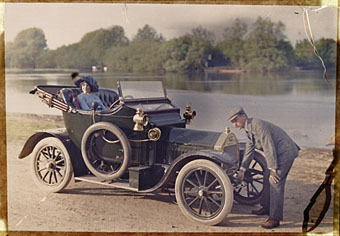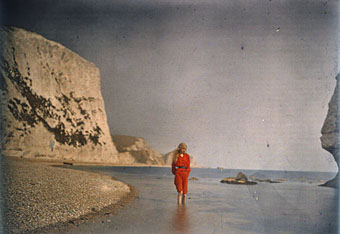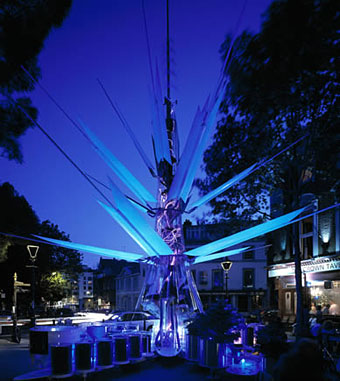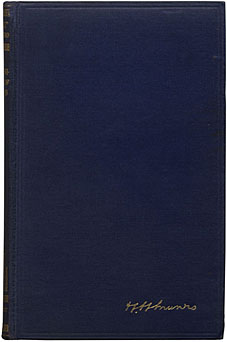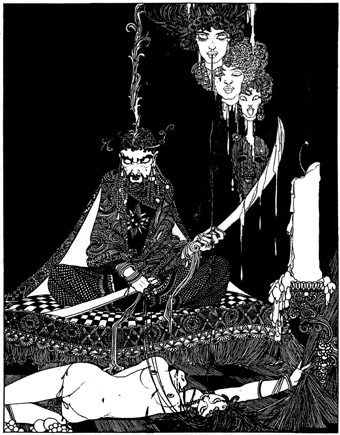Young couple with motor car, c.1910. Photographer unknown.
An exhibition of extraordinary Edwardian colour photographs opens today at the National Media Museum, London Bradford.
This exhibition will open on the 25th May. Marking one hundred years of the first practical process for colour photography—the Autochrome, invented by the Lumiere brothers—the National Media Museum presents a major summer show on what has been described as “perhaps the most beautiful of all the photographic processes”.
Today, we take colour photography for granted. Yet, for many years colour photographs remained an elusive dream. One hundred years ago, the dream became a reality when the first fully practical method of colour photography appeared—the Autochrome process.
The Dawn of Colour celebrates centenary of the Autochrome and the birth of colour photography. It reveals the Edwardian world as you have probably never seen it before—in full, vibrant colour. The past isn’t always in black and white.
The photographer’s daughter Christina at Lulworth cove,
Dorset in 1913 by Mervyn O’Gorman.
Previously on { feuilleton }
• Fred Holland Day
• The Door in the Wall
• Edward Steichen
• Mark Twain and Nikola Tesla

